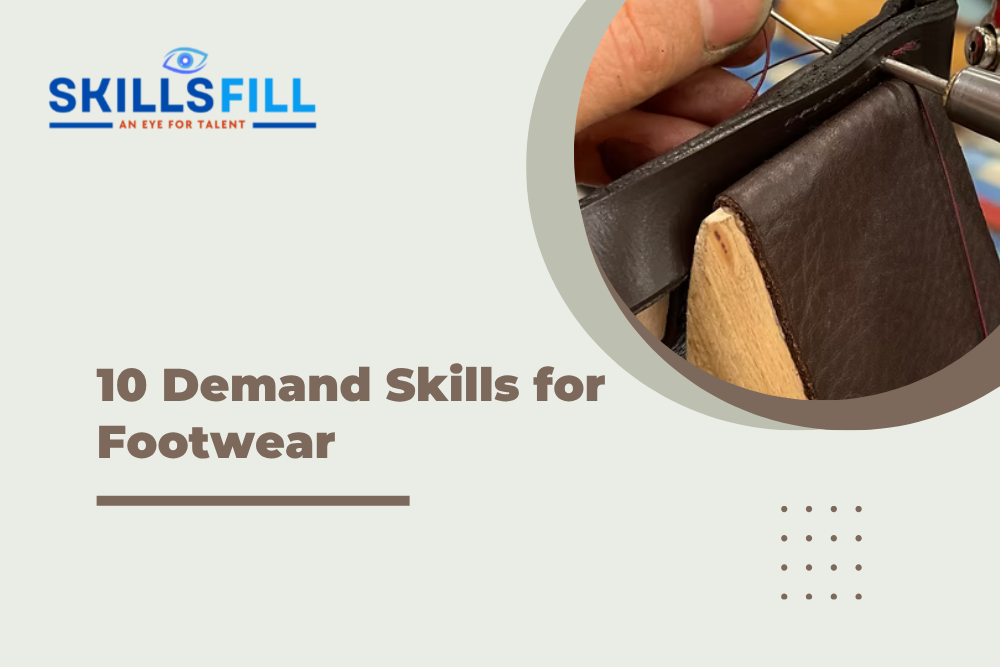Introduction
The leather and footwear industry is one of the oldest and most employment-generating sectors in India. From traditional artisanship to modern industrial production, this industry offers a wide range of job opportunities across various skill levels. However, with rising demand and increasing competition, companies now prioritize candidates who possess specific, practical skills over just academic qualifications. Whether you’re a fresher, a trainee, or a job seeker looking to upskill, understanding the most in-demand skills in this sector can improve your chances of getting hired and building a long-term career.
This article explores ten essential skills that recruiters and factories actively look for when hiring for leather and footwear jobs.
Why Skill Matters in Leather and Footwear Careers
In today’s fast-paced manufacturing environment, companies seek skilled manpower who can contribute from day one. The demand is especially high in industrial zones like Kanpur, Chennai, Agra, and Mayapuri in Delhi. Employers want candidates who understand machine handling, material care, quality standards, and workplace discipline.
Skills not only improve your hiring chances but also determine your long-term growth, wages, and job stability. Government schemes and private institutions are also pushing skill-based training to bridge the employment gap in this growing industry.
Leather Cutting and Clicking Skills
This is one of the foundational skills in footwear and leather production. Leather cutting involves using templates to cut leather hides into parts that will later be assembled. Clicking, a precision technique, requires workers to ensure minimum waste while cutting high-quality leather pieces.
Professionals with cutting and clicking experience are often hired quickly by leather goods exporters and branded shoe manufacturers. Good cutting directly impacts the durability, fit, and appearance of the final product.
Stitching and Sewing Machine Operation
Stitching is at the heart of leather goods and footwear manufacturing. From hand stitching to machine-based operations, this skill is essential in assembling parts of shoes, bags, belts, jackets, and wallets.
Workers are expected to operate flat-bed machines, post-bed machines, and zig-zag stitchers. Brands prefer employees who can handle multiple machines and work with different materials, such as suede, synthetic leather, and canvas. Accurate stitching ensures product strength and improves finish.
Finishing and Polishing Techniques
Once the product is assembled, the finishing process enhances its look and usability. In footwear, this involves applying creams, waxes, and sealants to give the shoe its final appearance. In leather goods, it includes buffing, brushing, and color correction.
Skilled finishers can turn an average product into a showroom-quality item. Companies appreciate candidates who understand the difference between matte and glossy finishes, and who can match colors precisely.
Quality Inspection and Testing, Basic Computer Skills for Production and Inventory
In the leather sector, quality assurance is taken very seriously. Poorly made or defective goods can lead to high returns and customer dissatisfaction. That’s why many companies look for candidates with a keen eye for detail.
Quality Inspection Skills involve checking dimensions, leather grades, stitching alignment, glue marks, and overall finish. Testing knowledge such as rub resistance, tensile strength, and water absorption is a plus.
In addition, Basic Computer Skills are becoming increasingly necessary. Many factories maintain digital records of production, inventory, and packaging. Entry-level roles now often require familiarity with MS Excel, barcode scanners, or ERP systems. Workers who can manage both technical and clerical responsibilities are considered more valuable.
Safety and Machine Handling Practices
The leather industry involves working with heavy-duty machines, sharp tools, and chemical agents. This makes safety training a critical skill. Workers must follow proper procedures while using skiving machines, splitting machines, embossers, and polishers.
Employers prefer candidates who understand machine maintenance, can change needles or blades safely, and who use protective equipment like gloves, safety shoes, and aprons. Awareness of factory safety protocols not only reduces accidents but also increases overall productivity.
Additional In-Demand Skills
While the above seven headings highlight the core areas, there are a few other important competencies that can further boost employability:
- Material Identification: Knowing the difference between real leather, synthetic leather, EVA, and PU is vital for quality control.
- Pattern Making & Grading: For those aiming at design or prototyping roles, the ability to create and grade patterns is a huge plus.
- Color Matching & Dyeing: Leather comes in many shades, and the ability to mix and match dyes precisely is a valued finishing skill.
Where to Learn These Skills
If you’re interested in developing these skills, several government-supported and private programs are available:
- Footwear Design and Development Institute (FDDI): Offers diploma and certificate courses in footwear, leather goods, and design.
- SkillsFill Training Centers: Provide job-oriented training in stitching, cutting, finishing, and more. Many courses are placement-linked.
- PMKVY (Pradhan Mantri Kaushal Vikas Yojana): Offers free training across India in leather-related trades.
- State Leather Development Boards: Run local skilling schemes and tie-ups with MSMEs.
Conclusion
The leather and footwear industry is not just about labor it’s about skilled craftsmanship, attention to detail, and industrial knowledge. Employers today seek people who can combine technical ability with practical experience.
Whether you are applying for a job in a shoe factory in Mayapuri or a leather bag unit in Kanpur, having the right skills will open more doors for you. Focus on the top ten in-demand areas, keep upgrading through training, and stay disciplined at the workplace. The leather industry offers a solid career path, and skill is your stepping stone to success.

